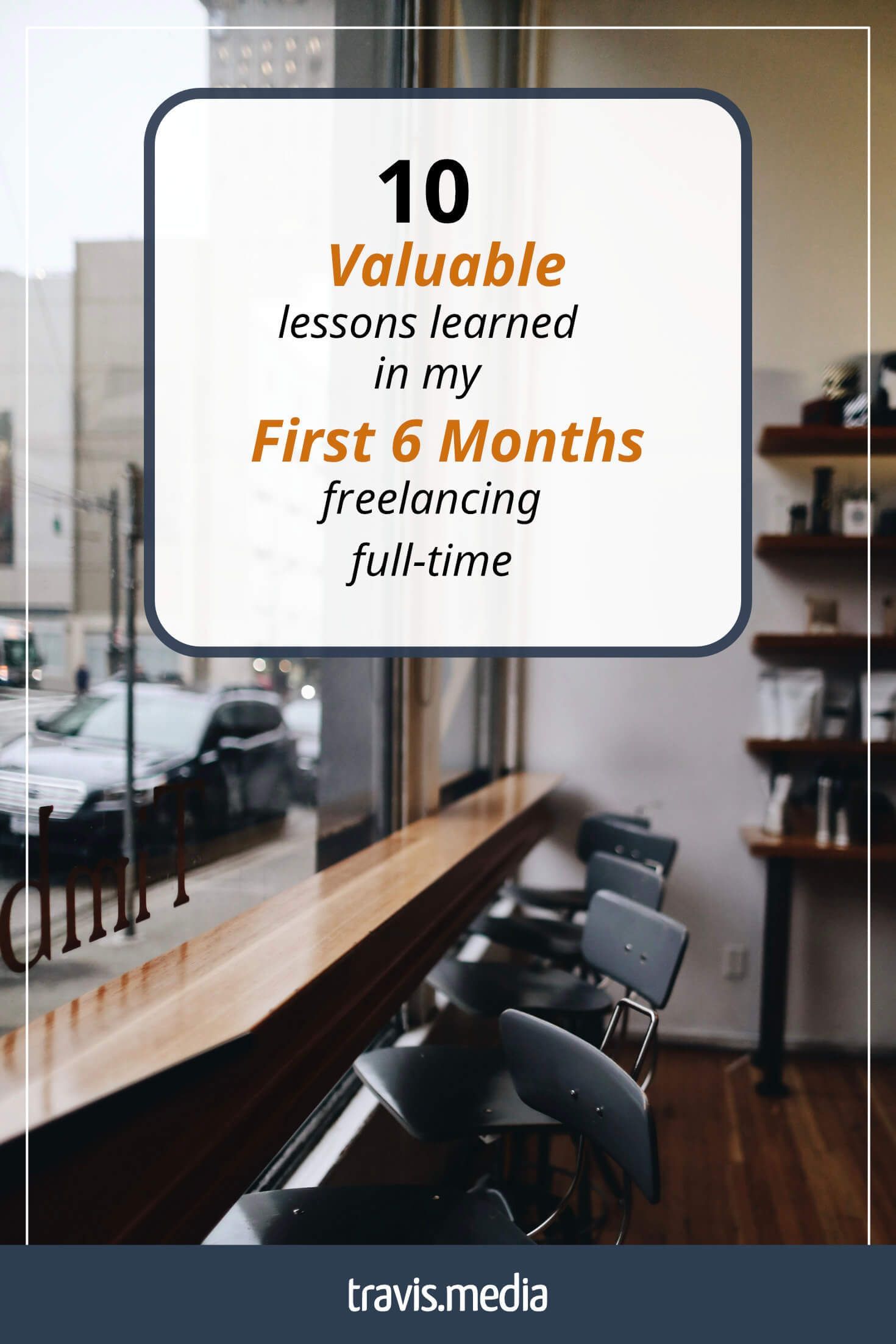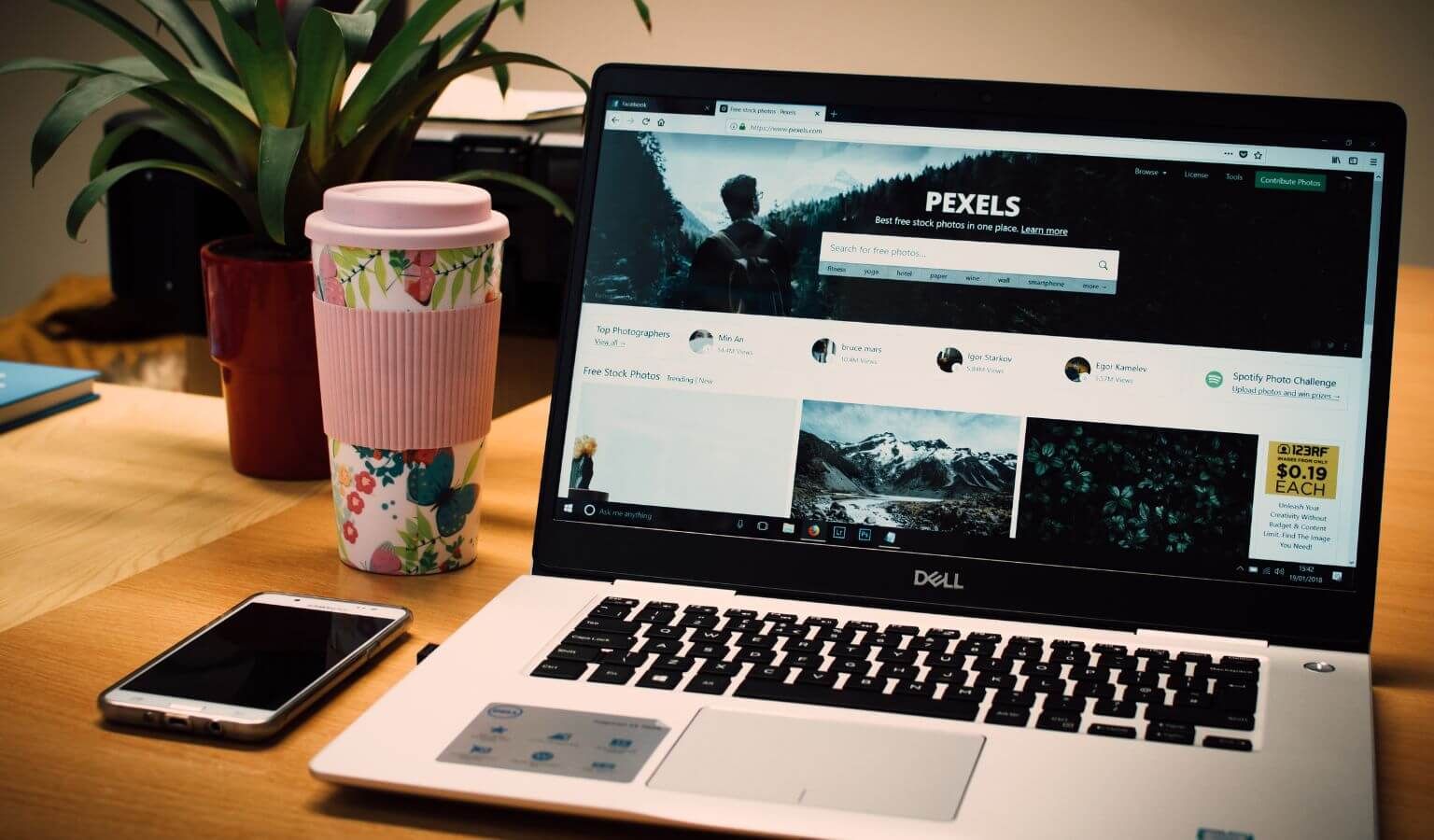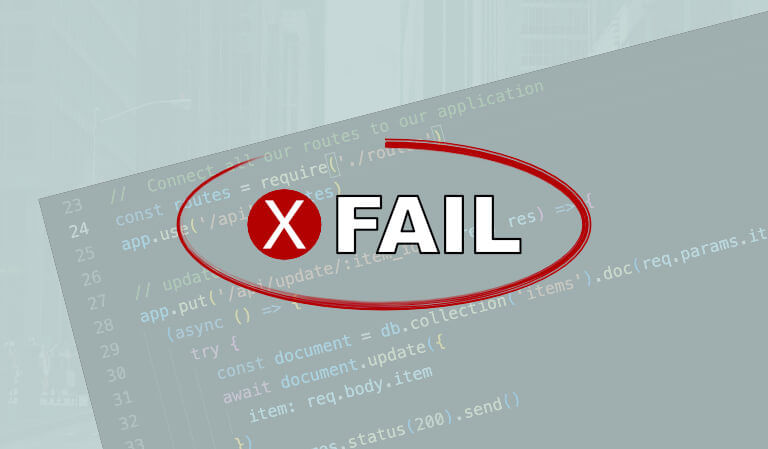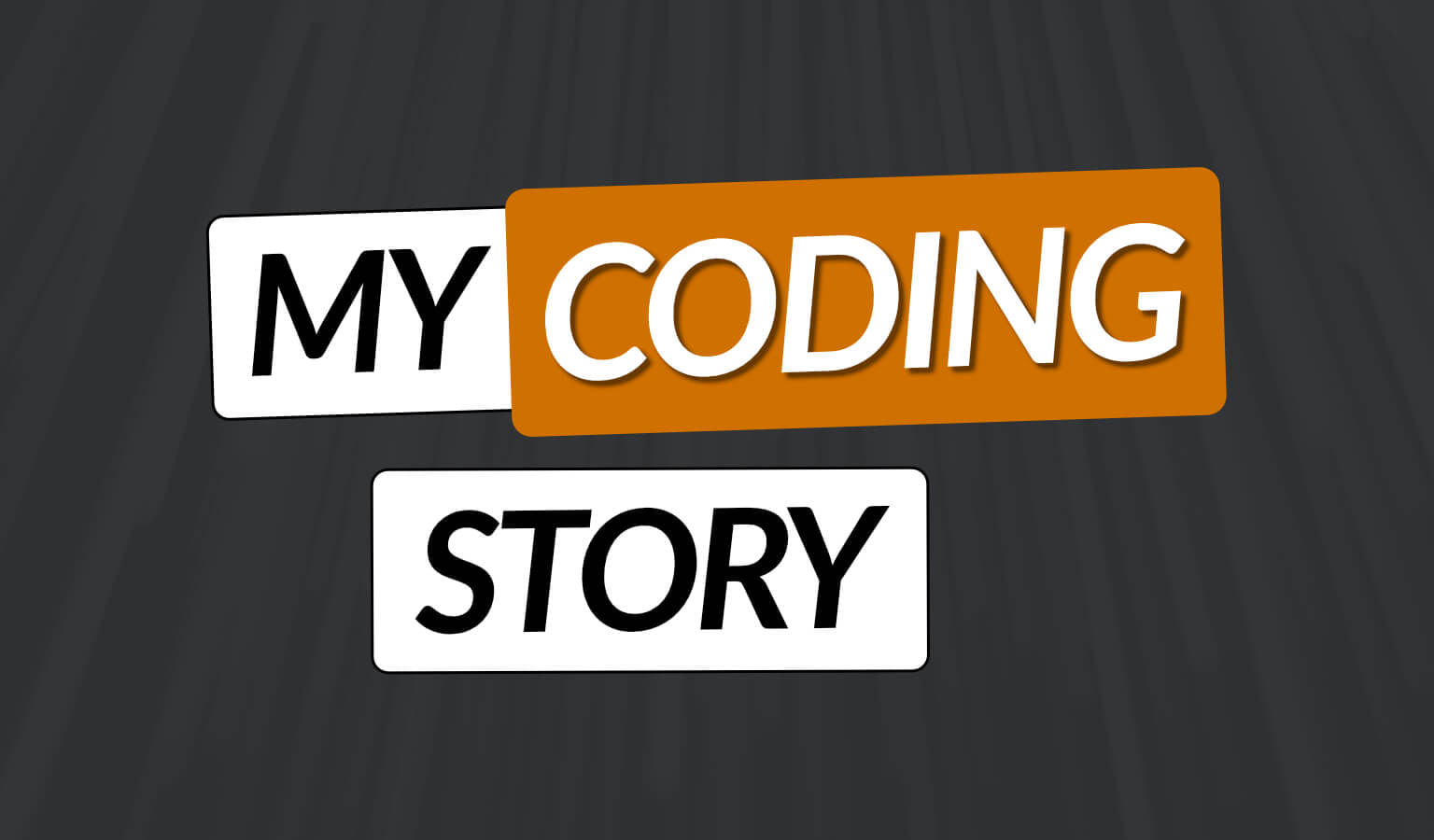10 Valuable Lessons Learned In My First 6 Months Freelancing Full-time
· Travis Rodgers · 15 min read
As I approach my sixth month as a full-time, freelance web developer, I want to reflect a little on the lessons I've learned along the way. Regardless of how much I studied beforehand to prepare, it was inevitable that some things I just had to learn on my own. In this post I will share 10 valuable lessons learned in my first 6 months freelancing full-time in hopes that it may benefit my readers looking to take the same path.

10 Valuable Lessons Learned
1. Your Pricing Determines Your Output
Pricing is a gray area for every freelancer, but the bottom line is that everyone does it differently and you have to determine what works for you. This may take time. It's okay.
But aside from getting your first portfolio entry, helping a good friend, or doing work for some charity, you should NEVER do any work for free. In addition, you should NEVER do web development or design for a cheap price.
Why? Because your output will reflect it.
Imagine…..
Scenario #1: You charge $500 for a custom website. It takes you three weeks to bring this to completion. On day #2 of this three weeks your electric bill comes in and it's $487. Thankfully you have your $500 to pay it with. But now you have 17 more days of which you will work for free…..for nothing.
Bills keep coming. The rent has to be paid.
Your motivation toward that project is going to diminish. You are going to want to "do what it takes"to be done with it, i.e. junk for you AND your client, and will ultimately have to begin something else simultaneously to assure more money coming in.
Now scenario 2: You determine that it takes $4,000/month ($1,000/wk) for you to live comfortably. You can pay your bills, set aside taxes and business expenses, take care of other necessities, and have enough left over to save/travel/etc. You take on a custom website build and estimate that it will take 3 weeks, or $3,000.
At this rate, you can focus solely on this project with no worries. Your "time" is covered. You are happy, creative, and your output will reflect that.
The #1 reason why you should find confidence in pricing appropriately is that it will bring the greatest satisfaction and accomplishment to both YOU and YOUR client. Cheap or free work will rob you both of this outcome.
2. You Must Keep Learning
Just as important as it is to brush your teeth every day, you should set a block of time daily (or at least weekly) for learning something new that will keep you relevant in your field.
When I stepped out as a freelancer, I knew WordPress, web development, HTML/CSS/JS/PHP, other things such as hosting basics, site optimization, etc. But clients also wanted ad campaigns, Hubspot integration, retina images, FB ads, membership capabilities, and many other services "web-related."
I guarantee that as you take on more jobs, the majority of them will include at least one thing that you have not dabbled in. As a freelance web developer, your duties are not just building websites. Devote a little time regularly to expanding your value base. Lynda.com offers a WIDE range of courses and learning paths from web development to design, from soft skills to digital marketing. They also offer a 30 day free trial. Check it out.
3. Invest In Professional Tools
At first I wanted to cut all costs to ensure financial success. All I needed was a simple website, my computer, and my "coding skills." Lot's of options were free: Mailchimp, WordPress, Gmail, Ninja Forms, some free Security plugin, etc.
All this is great to start, but once your site sees more traffic, more engagement, more client interaction, you will realize that you are extremely limited in your potential potential (yes I used it twice).
Investment examples may include good security, a solid form creator, opt-ins, social media tools, website tools (social sharing, page builders, optimizations, frameworks, etc.), invoicing software, etc. There is a reason software is usually presented as free with a "paid upgrade."
This not only applies to software or website-related things, but investing in conferences, books or courses. One of the biggest investments I made was going through the WP Elevation Blueprint. This was game changing for my business and was worth every single penny paid.
Be ready to make investments in your business, investments that will bring about better client relations, a more engaging web presence, and an overall better process.
4. Your Process Is Everything
Speaking of processes, process is everything. I began without a good process….just taking it "a step at a time."
This outlook is time-consuming, creates a lack of focus and clarity, and is generally unprofessional.
Within my first six months freelancing, I am at a point where my social media is 90% automated, my ebooks/follow-up emails/funnels/etc. are automated, my web development process has steps, and things like blogging and learning are scheduled at particular times. It takes time to create, but the sooner you start the better.
This is not only a huge time saver, but having a process for your work shows your potential clients that you take your work seriously.
How do you handle proposals, discovery sessions, revisions, payments, follow-ups, etc?
You should sit down one day and work these things out. Determine your web design process, the steps from beginning to end, and use it on every project.
5. Create a Starter Theme and Master It
I was always partial to the Genesis Framework (still am) and always suggested that the client choose a child theme from Studiopress.
But then I saw the value in building custom themes for clients, themes that were not pre-loaded with unnecessary features that may slow the site down. I looked to other options like GeneratePress, Astra, etc., themes that were minimal but offered some good options to speed up workflow.
However, I didn't like it. They are great themes targeted at people without coding knowledge and for people that build sites based around page builders. And this is a good thing. I am all for page builders (Elementor being my favorite) and the latest innovation that these tools bring.
But I wanted to build websites for my clients that have specific purposes and are built around those specific purposes and nothing more. In addition, I wanted one theme/solution that I could master and work into my process for all sites that I build.
Still convinced of the superiority of Genesis themes, I searched for starter themes with Sass integration, and found a few good options, but each one was built around a specific purpose for its creator and either missing things I needed or including things I didn't want.
Then I came across Know The Code, who had a course on building a Genesis Starter Theme, and the rest is history. I worked through this course, built out an optimized, minimal-to-start, Genesis Child Theme that I fully understand and that I have fully made my own.
This not only gave me a great starter for all my projects, but it revived the joy of building a website from scratch, with understanding each detail of my theme and what every single line of code does. It includes Sass, Gulp, in addition to the essentials found in the Genesis Sample Theme.
I love it. Go check out that course and create you a powerful starter theme that you can find confidence in.
6. Don't Underestimate Your Value
Think back to when you started to code. Think how far you've come. That huge gap represents the immediate value that you bring to others. People come to you for those services and you meet that need with the value you bring.
Your value is what ultimately brings you money. When someone needs a website, they pay for the value you provide. When someone wants a 1-hour consultation, they pay for that value. This is your job and you should get paid for it.
Did you feel guilty at your regular 9-5 day job of staying clocked in when you went to the bathroom, or when took a walk around the building? Why then would you want to give away any of your value for free?
This is a huge psychological barrier for me when I started and for the duration of my first six months freelancing. A figure like $3,000 was a huge amount of money to me, and if you are honest it is probably to you as well. I felt like no one would have that cash to pay me to build their website. I figured everyone thought like me, so I put up a price that I thought people could afford (low).
But why were others charging $3000, $6000, $10,000 for websites then? And why were they getting successful clients and I the duds? Because they realized their value. I didn't.
You see, the value in web design is not the code, the choice of theme, or hosting solution. The value is how you are able to successfully meet the needs of your client or client's business. You are not building them a website, but an online marketing solution, one that will bring them compounded profit in the months and years to come.
They can't do it. You can. You have taken the time to learn the trade, and you are valuable in that respect.
Practice the art of feeling comfortable talking about money. It costs X to provide this service, and that's the bottom line. I can't provide this service for less. This is how every business works, why not yours?
As Mike Monteiro stated in his wonderful book, Design is a Job:
"Let's start by going over a short list of people who are not uncomfortable with money: your landlord, your utility companies, your insurance agent, your grocer….your doctor. Money is necessary to the fabric of society…. You are not doing design, your are selling design, which is a valuable service."
A valuable service. Say that ten times, and start valuing your expertise and your services.
7. Reassess Your Website & Create Content
When you began learning to code, you probably built a website at some point. You were proud of it and have built on it over the subsequent months or years.
But once you begin to take your business seriously, and look to attract clients, you should reassess, and even consider redesigning, your website.
I am just coming around to this reality and I thank my wife for her bluntness about my own site and its need for reassessment after my first six months freelancing.
If you are advertising your wonderful web design services, and people come to your site and see it's very amateur in terms of design, they will go elsewhere. That makes sense right? You are a modern designer and can create dazzling websites, but your own looks funky?
For example: If you stress custom coding and development, you want your site to reflect your expertise in programming. A good example is Bill Erickson's site. It doesn't reflect a master designer, but it reflects a master developer. It's not amazing in design, but it is FULL of coding resources that demonstrates his programming abilities.
If you instead stress your creativity and design skills, you want your site to show it. A good example is Shane Mielke's site.
I am not saying you should spend all of your time on your site. But make it professionally reflect your core services. If you provide X, then be sure to show that your own X is top notch as well.
8. Business Strategy Determines Website Design
How do you come up with a website design? Do you just pop up a hero image, a couple of boxes in the next section, some projects, a call-to-action, and a contact form, all arbitrarily?
I struggled with this at first. What determines what a particular site should look like?
Over time, I realized that this was absolutely the wrong way to look at it.
Let's say you are a writer and your business strategy is to sell books. It may look great to have a nice image of you, an about section, and some of your credentials on your homepage. But this fails to address your business goal, which is to sell your books.
Instead, your homepage should have a progression toward a reader buying your books. So it may have a hero image, a unique value statement, a section about you and your creative philosophy, but it should gradually progress towards a section highlighting your books or a particular book and what value it would bring for your visitor to buy it.
The key is to spend the right amount of time determining the strategy of a business…..the reasons for needing a website, and what steps should be taken for reaching that goal.
Then!….begins your design. It becomes much easier and allows for more focused creativity to design around a strategy versus designing around nothing.
Your business strategy determines your design!
9. Create Recurring Income Sources
The biggest shock to freelancing is the expenses. With any 9-5 corporate job, they pay half your taxes, provide you with benefits including vacation time, and even pay you for going to the bathroom.
Once you step out on your own, you have to pay your taxes in full, your own health insurance, and most importantly when you decide not to work for a day, YOU DON'T GET PAID.
So previously you would take a week of vacation with pay. NOW, if you take a week of vacation, you receive nothing but the next bills showing up in your mailbox.
Besides saving up, the best way to allow for days off or emergencies is to create recurring income sources.
Perhaps you create courses, ebooks, or provide some sort of membership services. These all work.
But another more relevant option is to offer monthly maintenance plans to your clients.
Say for $90/month you offer to backup their site, do malware checks, update the WordPress core and plugins, and provide 1 hour of custom requests.
All but the latter can be performed within minutes with programs like ManageWP, and 1 hour of custom requests will take…1 hour. Anything after assumes an hourly rate.
So at $90/month, if you have 10 clients on the plan, thats $900/month for a half a day's worth of work. And this comes every month.
If your rate is $50/hour, this allows you to take around 18 hours of time off every month, with pay!
10. Confidence !== "Spamminess"
I sometimes hear from clients that they want to sell X but they want to do it in a way that's not spammy. Usually this is code for, "I want people to buy my product without me really asking them to." These clients don't want any serious email campaigns, ads, or funnels. They want to be genuine. They dislike asking people for emails in exchange for free content and really hate that it all ends in huge sales pitch.
Well there's a reason those services are thriving, but the client is coming to me for assistance. And the client's reason is not dislike of "spamminess," but often a lack of confidence in their own product or service.
It took me a long time to learn the difference in being spammy and being confident in my product.
When I wrote my first e-book, I was a bit hesitant to create a pop-up opt-in on my website. I didn't want to come off too strong in an effort to build my email list. I thought it might be spammy, but the real reason is that I lacked confidence in my work.
I eventually came around. I was proud of my book and of the time that I spent writing it, editing it, etc., and determined that it was a valuable resource to the right person. My confidence in my product and it's value allowed me to market it in a way that did not come off spammy, but demonstrated my confidence in the product.
Conclusion
There are many more lessons that I could have added from my first six months freelancing to include investing in a good chair, daily habits, productivity lessons, etc., but those will have to wait, perhaps for the yearly update.
So that's it for my 10 Valuable Lessons Learned In My First 6 Months Freelancing Full-time. Hopefully you resonated with a few or learned something that you can use in your own freelancing career.
What lessons have you learned or did you learn starting out? Share them below.
This page may contain affiliate links. Please see my affiliate disclaimer for more info.



